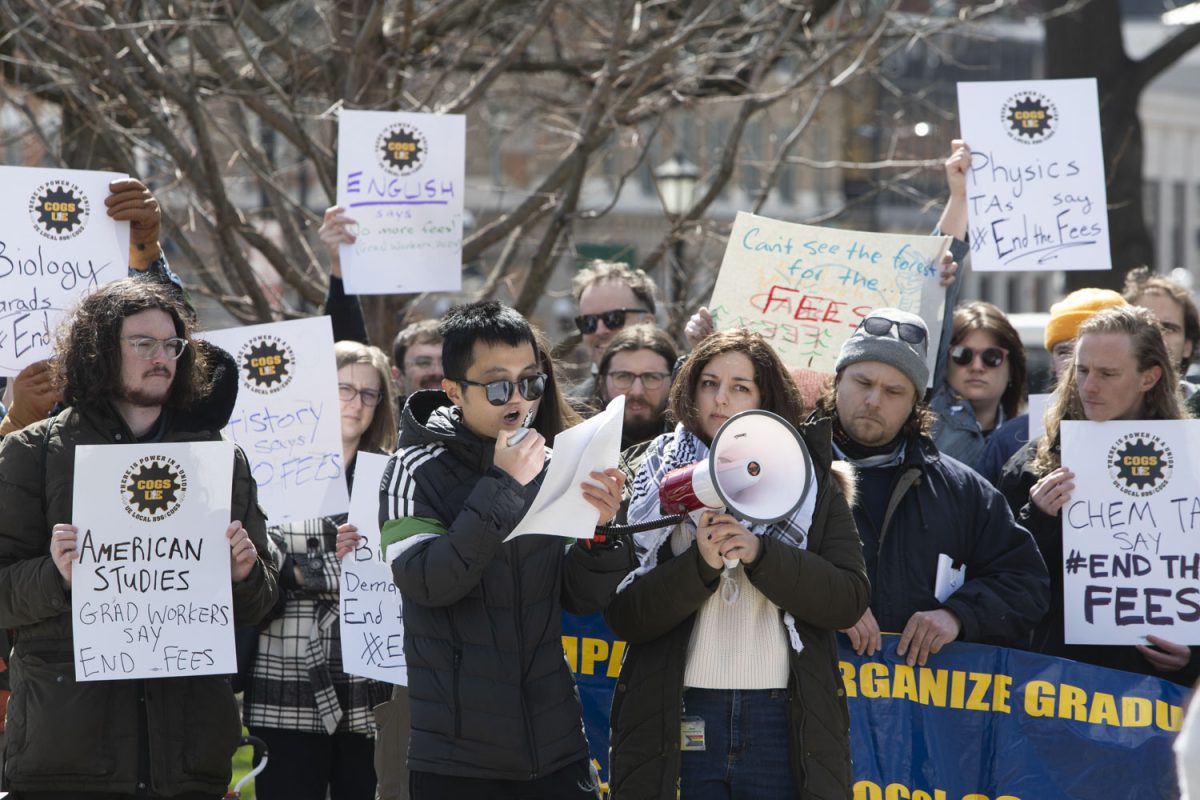In a university of this stature, it’s important that all educators on campus share common goals. In order for our university to move forward, administrators and faculty and staff members alike must work to the same end.
One way the UI measure that connection among employees is the Working at Iowa survey, which is designed to test the engagement of university employees. While participation in the optional survey has jumped from 43 percent last year to 62 percent this year, university officials should require that all the school’s employees participate in the survey so we can be sure to have an accurate representation of the employee pool.
Kevin Ward, the executive associate director of UI Human Resources, said university officials have tried to increase the importance of annual performance evaluations. “Performance is a part of leadership,” he said. However, participation in the Working at Iowa survey is voluntary.
If filling in a few ovals will help give us an accurate assessment of employee sentiment, then why not have it be mandatory?
Some of the largest divisions on this campus — the College of Liberal Arts and Sciences, College of Medicine, and UI Hospitals and Clinics — have survey participation numbers less than 66 percent.
In fact, the liberal-arts school employs nearly 1,200 unique individuals, more than one-third of whom declined to complete the survey. When one-third of a population refuses to speak up, how can we begin to address the problems each employee faces?
Recently released results from the 2008 Working at Iowa survey revealed some interesting, sometimes startling, results. There are a few disparities between administrators and faculty. Poor performance management, workload distribution, and conflict resolution were some of the key issues that many faculty and staff thought were lacking. Even on paramount questions such as “Are you confident there is a plan to strengthen the UI?” there seemed to be a small, but important, degree of disagreement.
Ward is hopeful that with the feedback received from this survey that officials will be able to “connect the dots” and move toward improvement. The Working at Iowa initiative has started the conversation and allowing the facts to get in the open. The transparency of this survey is part of the appeal. With this information, those who participated can understand substantially more about how they fit in with the rest of the employees at the university.
While many administrators do a good job of being open to concerns from subordinate employees, the Working at Iowa survey is unique in that it is confidential. The confidential nature of this survey adds to the level of honesty we can expect from respondents. However, for the students to better understand how their university operates, full participation should be mandated.
The students of this university are expected to fill out teacher-evaluation surveys after each term. The purpose of this is to gauge the learning experience of the students and the ability of the teacher to present the material taught. The students are asked to be honest and provide thoughtful answers in order to help the professors better their classrooms. The Working at Iowa survey must be as expected as these student surveys. When the expectations of any university are clear to the students and employees, goals will be met faster and problems solved quicker. If the end result will be a better university for years to come, then 15 minutes out of an employee’s day is well worth the sacrifice.





